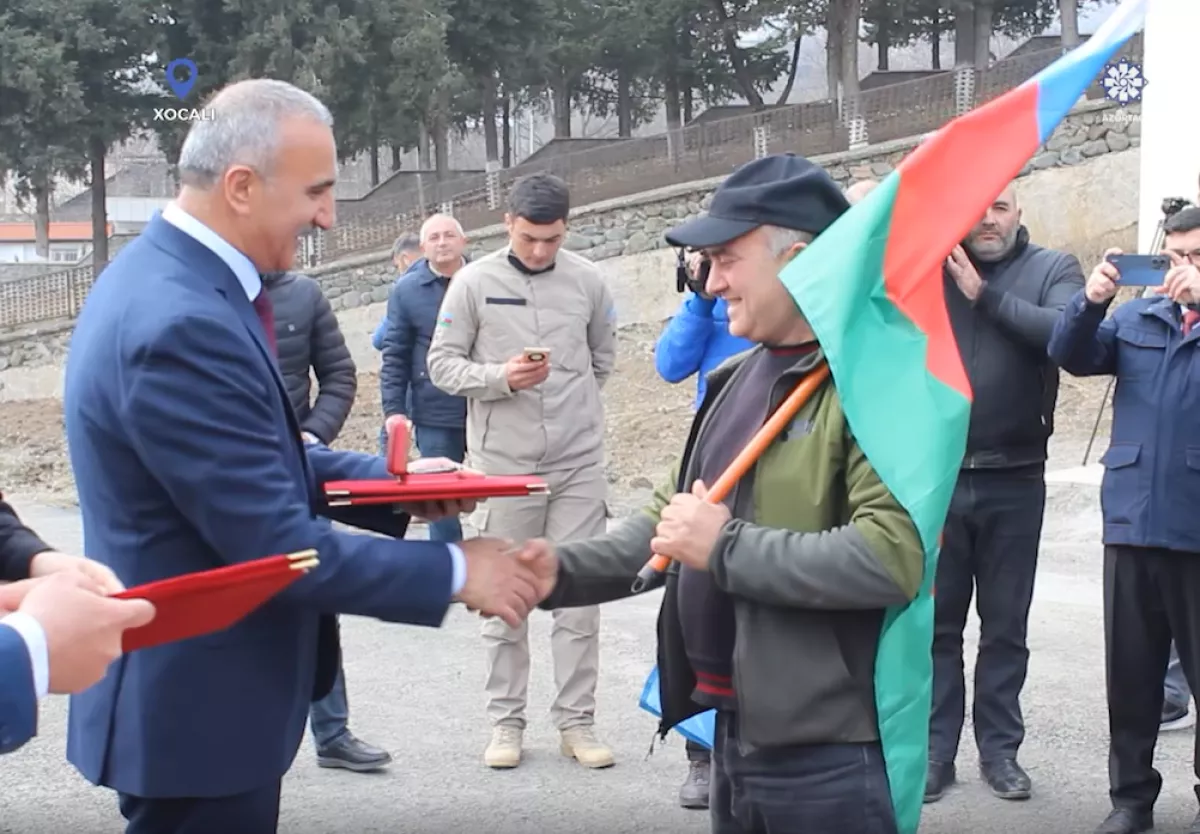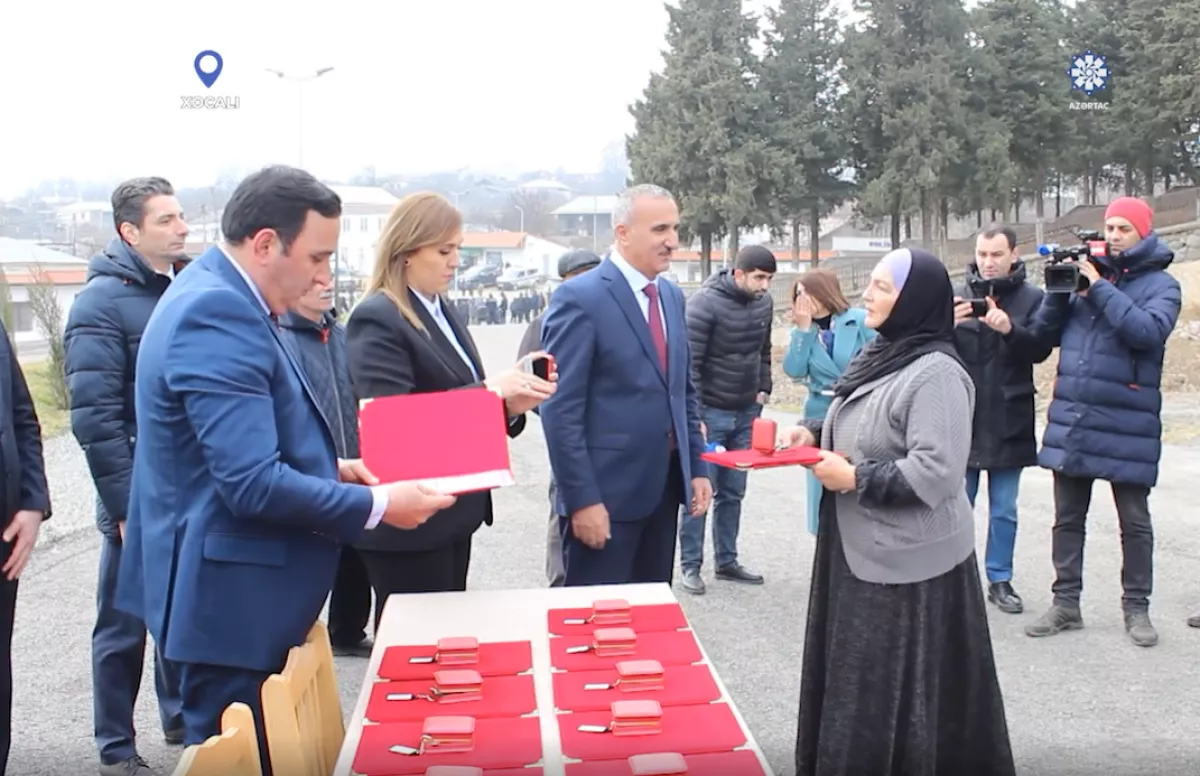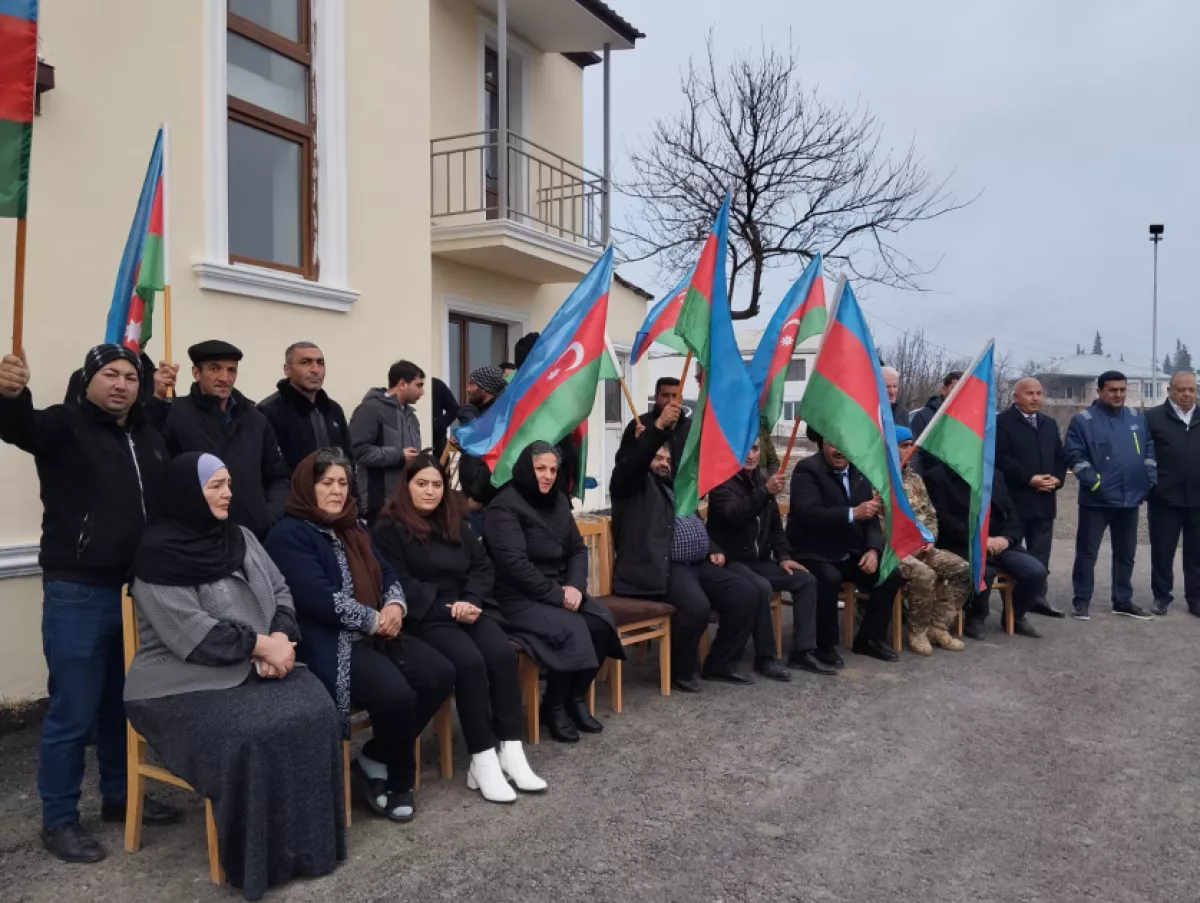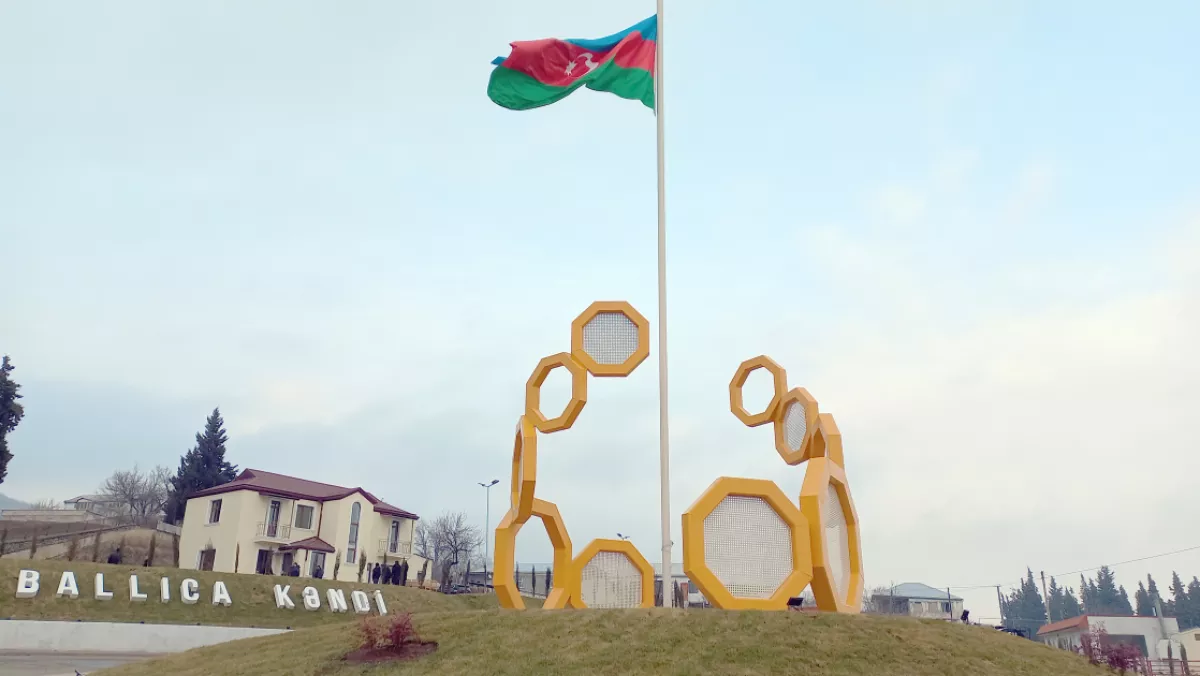Khojaly, Shusha welcome next wave of returning residents after 30 years of forcible separation
Within the framework of the "Great Return" initative carried out under the directive of President Ilham Aliyev, the residence of another 28 families has been restored in the liberated territories of Azerbaijan, namely in the cities of Khojaly, Shusha and the village of Ballija.
The resettlement of the formerly internally displaced persons (IDPs) that was forcibly imposed on them by the illegal occupation of Azerbaijan's sovereign territories by Armenian forces took place on January 15, Caliber.Az reports citing Azertag.
The residents returning home were greeted by the local authorities that have been appointed by the government as the President's special representation for the cities of Khankendi, Aghdere and the Khojaly districts. In the presence of officials from the State Committee for Refugees and Internally Displaced Persons, the families received keys to their new homes and settled into their residences.
One such local government official present during the homecoming was Telman Kerimli, the Executive Director of the Service for Restoration, Construction, and Management in the city of Khankendi and the Khojaly and Aghdere districts. He congratulated the returnees and noted that Khojaly has become a place where hopes and dreams are realized with homes, that have had to remain dark for more than thirty years, being filled with light and laughter again.
As of today, a total of 68 families have been resettled into the Ballija village, located in the Khojaly district, and 52 into the city of Khojaly, with the resettlement process to be continued in phases throughout 2025.
The returnees expressed their gratitude to the government of Azerbaijan, including President Ilham Aliyev, and the Azerbaijani Army for liberating their homes from the occupation. They paid tribute to the martyrs who sacrificed their lives for this cause, offering condolences to their families.
As Caliber.Az recalls, an approximate 30,000 people now reside in the Karabakh and East Zangezur region, including former IDPs, individuals working on various projects in the region, state employees working in the local branches and those engaged in the revitalized sectors of healthcare, education, culture, tourism, industry, and energy.
By Nazrin Sadigova












